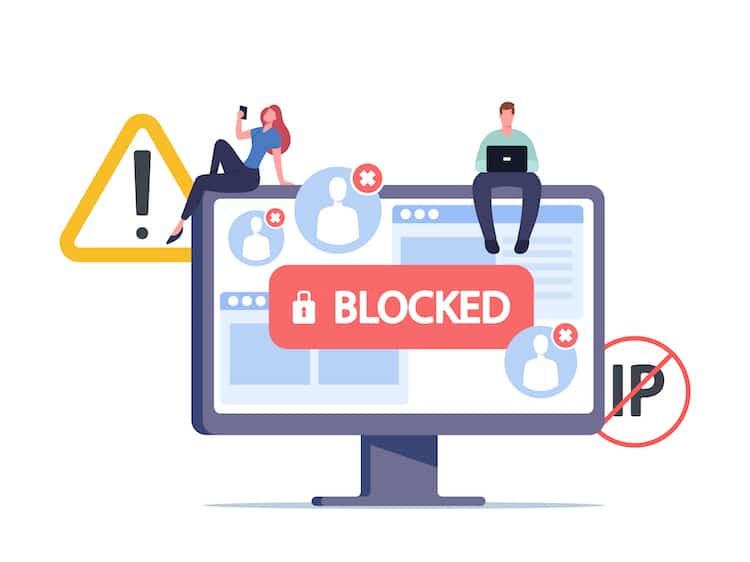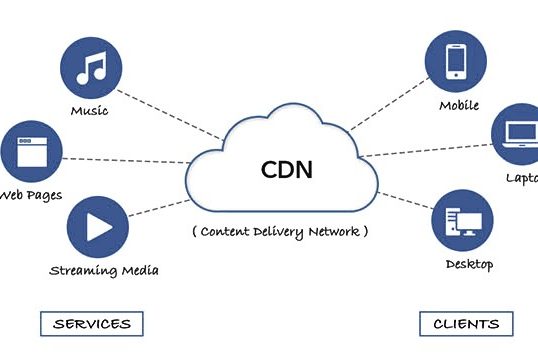
Table of Contents
An IP block is a network security measure that prevents specific IP Block addresses from accessing a network or service. It is often used to protect websites, web servers, or networks from malicious activity.When a website provider implements an IP block on a shared hosting server, it can affect multiple users who share the same server resources. This is because, in shared hosting, multiple websites use the same server infrastructure and often share the same IP address. Here are the main causes of IP blocking and potential resolutions:
Causes of IP Block in Detail:
Suspicious Activity or Hacking Attempts:
- Brute Force Attacks: Repeated attempts to guess a password by systematically trying all possible combinations. If a security system detects numerous failed login attempts in a short time frame, it may automatically block the IP to prevent unauthorized access.
- Denial-of-Service (DoS) Attacks: Attackers send excessive requests to a server, overwhelming its resources. A distributed denial-of-service (DDoS) attack uses multiple systems to flood the server. As a defense mechanism, the server may block the IP(s) involved.
- Port Scanning: Attackers often scan network ports to find vulnerabilities. Frequent scanning from an IP can trigger a block as it’s viewed as preparatory behavior for an attack.
Violation of Website Terms:
- Scraping: Extracting large amounts of data from a website without permission (e.g., using bots to collect data). Websites often have rate limits or CAPTCHA systems to prevent scraping. Violating these may result in an IP block.
- Spamming: Sending unsolicited or bulk emails, messages, or requests. Many websites and email servers block IP addresses suspected of sending spam to protect their users and networks.
- Abusive Behavior: Engaging in harassment or posting inappropriate content on websites, forums, or social media can lead to an IP ban.
Geolocation Restrictions:
- Regional Licensing: Some services, such as streaming platforms, limit content availability to certain geographic regions. They block IPs from regions where the content is restricted.
- Government Censorship: In some countries, governments block IPs of certain websites or services (e.g., social media, news outlets) to control information access.
Infected Devices or Malware:
- Botnets: A device infected with malware can become part of a botnet, a network of compromised computers controlled by an attacker. These botnets can be used to send spam or launch DDoS attacks, which can result in your IP being blocked.
- Malicious Traffic: Malware on your device may send out malicious traffic without your knowledge. If your IP Block is identified as the source of such traffic, security systems may block it to protect other users.
IP Reputation:
- IP Blacklists: Some services use databases of IPs known for malicious activity. If an IP address has been flagged for prior hacking, spamming, or abusive behavior, it might be blocked by other systems, even if the current user isn’t engaging in such activity.
- Shared IP Addresses: Many internet service providers (ISPs) assign shared IP addresses to multiple users. If someone sharing your IP engages in bad behavior, the whole IP may be blocked, affecting all users on that address.
Firewall or Security Systems:
- Network Firewalls: Firewalls may automatically block IP Block addresses based on preset rules, such as too many connection attempts in a short period. Network administrators may configure firewalls to block entire ranges of IPs if they come from regions known for malicious traffic.
- Intrusion Detection Systems (IDS): These systems monitor network traffic and block IPs that match patterns associated with hacking, malware, or other threats.
Detailed Resolutions:
Alternate DNS Settings: Changing your DNS settings to use a public DNS resolver (such as Google’s DNS or Cloudflare’s DNS) may sometimes help in accessing content that may be blocked at the DNS level, though this does not bypass IP-level blocks.
Contact the Service Provider:
Customer Support: If you believe your IP has been blocked in error, you can contact the website or service provider’s customer support. Provide details about your situation, including your IP address, and request removal from the blocklist.
Email Appeals: Some services provide dedicated email addresses or forms for users to appeal IP blocks. This is common with email providers or cloud services (e.g., if your IP is blocked by Google, you may need to submit a form to have it reviewed).
Change IP Address:
Dynamic IP Addresses: If your ISP assigns you a dynamic IP address, simply restarting your router or modem may assign you a new IP address, allowing you to bypass the IP block.
Request New IP from ISP: If restarting your router doesn’t change your IP or if you have a static IP, you can contact your ISP to request a new one. Some ISPs may charge a fee for this service.
Use a VPN or Proxy: VPNs (Virtual Private Networks) or proxy servers allow you to connect to the internet through a different IP address, bypassing the block. Be cautious when using free VPNs, as they may also be blocked for abuse.
Check for Malware:
Run Antivirus Software: Use reputable antivirus software to scan your device for malware, viruses, or spyware. If malware is detected, remove it to stop malicious traffic from being sent from your IP.
Update Software: Ensure that your operating system, browser, and other applications are up to date with the latest security patches to prevent future infections.
Isolate Infected Devices: If you suspect a specific device is infected, disconnect it from your network until the issue is resolved to avoid further malicious traffic from being sent.
Wait for the Block to Expire:
Temporary Blocks: Many systems issue temporary IP blocks for specific durations (e.g., 24 hours or a week) in response to suspicious activity. If the block is temporary, waiting it out may resolve the issue.
Monitor the Situation: After the block expires, ensure you do not repeat the behavior that triggered it (e.g., too many failed login attempts or scraping) to avoid being blocked again.
Comply with Website Policies:
Review Terms of Service: Many websites have terms of service that outline prohibited activities (e.g., using bots, scraping, or posting spam). Understanding and adhering to these terms can prevent future blocks.
Limit Automated Access: If you’re using automation tools (e.g., web scrapers or bots), ensure that they comply with the website’s API usage limits and are not overwhelming the server.
Whitelisting:
Firewall or Security System: If you control the network or firewall, you can manually whitelist the blocked IP address to allow it through. Many firewalls offer this functionality to allow trusted IPs access to internal resources.
IP Address Filtering: Some firewalls or intrusion prevention systems allow you to configure specific filters that bypass the blocking rules for certain trusted IP addresses or ranges.
Reduce Suspicious Activity:
Avoid Rapid Requests: If you’re accessing a website or server frequently (e.g., web scraping or API requests), consider reducing the rate at which you make requests. Some websites may block IPs that send too many requests in a short period.
CAPTCHA Compliance: Many websites use CAPTCHA systems to detect automated traffic. Ensure that your activity complies with CAPTCHA challenges if they appear, and don’t attempt to bypass them using automation tools.
Use Alternate Network Settings:
Proxy Servers: If you are on a network where access is restricted, setting up a proxy server could help route traffic through an IP that is not blocked.
Final Considerations:
- Regularly Monitor Your IP Block: Use online tools to check if your IP Block is on a blacklist. Services like Spamhaus or Project Honeypot provide such lists. If you find yourself blocked, investigate why and take action.
- Legal Restrictions: Be aware that bypassing certain blocks (e.g., geolocation blocks) may violate terms of service or local laws. Always ensure that your actions comply with the legal regulations in your area.





